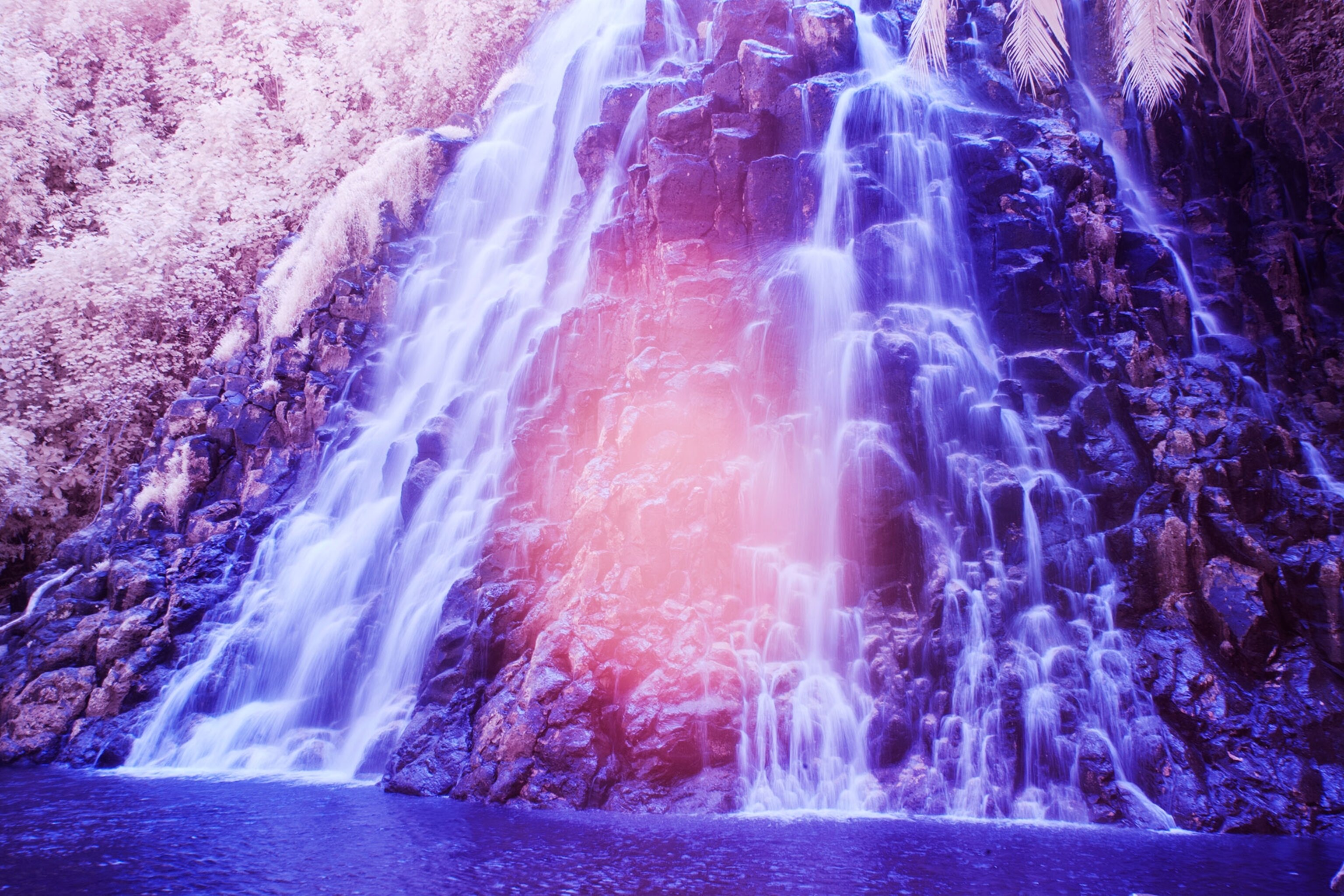
On Island of the Colorblind, Paradise Has a Different Hue
An island in the Pacific has a unique genetic history that affects how its people understand color.
Pingelap Atoll, a Micronesian island in the South Pacific, sometimes goes by its other name, the Island of the Colorblind. That's the moniker Oliver Sacks assigned the island in his 1996 book that explored the human brain. Pingelap piqued the interest of Sacks and many other scientists because of its strange genetic circumstance. According to legend, a devastating typhoon in 1775 caused a population bottleneck. One of the survivors, the ruler, carried a rare gene for an extreme type of color blindness. Eventually, he passed the gene to the island's later generations.
Today roughly 10 percent of the island's people are still believed to have the gene for the condition, known as complete achromatopsia, a rate significantly higher than the one-in-30,000 occurrence elsewhere in the world. But 10 percent is also high enough that the concept of color—and who can see it—has acquired new meaning among people in Pingelap.







Belgian photographer Sanne De Wilde has used the island and the concept of color blindness to inspire a series of images on genetics. During a visit to Pingelap in 2015, she created photos showing the world as a color-blind person might see it. Some are complete black-and-white images. But several achromatopes claimed they could see slight variations of some colors, like red or blue. So she used infrared photo settings and lenses on her camera to distort and mute certain colors. Then, in a stroke of artistry, she invited some of the sufferers to paint over some of the images with watercolors to reflect how they saw the world.
The challenge of vision impairment, of course, is that it's hard to understand something the eye has never seen. What is orange to a person who only knows black and white? "Color is just a word to those who cannot see it," De Wilde observed. Once back from the island, she created in her Amsterdam studio an installation as a form of reverse osmosis, to simulate color blindness. Visitors were invited to paint using colors that never seem to appear. And then later, to their surprise and bewilderment, they were confronted with their blindly colorful artwork.




"What I'm really trying to do is to invite people to a new way of seeing and interacting with the world," says De Wilde. Her other projects, about albinism and dwarfism, occupy the same overlap of genetics, geography, and social stigma. But there's something primal about vision, the eyes as the body's first ambassadors to the world. A project about color becomes a project about perspective, and how two people's are never quite the same.

Sanne De Wilde's book, The Island of the Colorblind, is available for purchase from joint publishers Uitgeverij Kanibaal and Kehrer Verlag.
Related Topics
You May Also Like
Go Further
Animals
- This ‘saber-toothed’ salmon wasn’t quite what we thoughtThis ‘saber-toothed’ salmon wasn’t quite what we thought
- Why this rhino-zebra friendship makes perfect senseWhy this rhino-zebra friendship makes perfect sense
- When did bioluminescence evolve? It’s older than we thought.When did bioluminescence evolve? It’s older than we thought.
- Soy, skim … spider. Are any of these technically milk?Soy, skim … spider. Are any of these technically milk?
- This pristine piece of the Amazon shows nature’s resilienceThis pristine piece of the Amazon shows nature’s resilience
Environment
- This pristine piece of the Amazon shows nature’s resilienceThis pristine piece of the Amazon shows nature’s resilience
- Listen to 30 years of climate change transformed into haunting musicListen to 30 years of climate change transformed into haunting music
- This ancient society tried to stop El Niño—with child sacrificeThis ancient society tried to stop El Niño—with child sacrifice
- U.S. plans to clean its drinking water. What does that mean?U.S. plans to clean its drinking water. What does that mean?
History & Culture
- Meet the original members of the tortured poets departmentMeet the original members of the tortured poets department
- Séances at the White House? Why these first ladies turned to the occultSéances at the White House? Why these first ladies turned to the occult
- Gambling is everywhere now. When is that a problem?Gambling is everywhere now. When is that a problem?
- Beauty is pain—at least it was in 17th-century SpainBeauty is pain—at least it was in 17th-century Spain
- The real spies who inspired ‘The Ministry of Ungentlemanly Warfare’The real spies who inspired ‘The Ministry of Ungentlemanly Warfare’
Science
- Here's how astronomers found one of the rarest phenomenons in spaceHere's how astronomers found one of the rarest phenomenons in space
- Not an extrovert or introvert? There’s a word for that.Not an extrovert or introvert? There’s a word for that.
- NASA has a plan to clean up space junk—but is going green enough?NASA has a plan to clean up space junk—but is going green enough?
- Soy, skim … spider. Are any of these technically milk?Soy, skim … spider. Are any of these technically milk?
- Can aspirin help protect against colorectal cancers?Can aspirin help protect against colorectal cancers?
Travel
- What it's like to hike the Camino del Mayab in MexicoWhat it's like to hike the Camino del Mayab in Mexico
- Is this small English town Yorkshire's culinary capital?Is this small English town Yorkshire's culinary capital?
- This chef is taking Indian cuisine in a bold new directionThis chef is taking Indian cuisine in a bold new direction
- Follow in the footsteps of Robin Hood in Sherwood ForestFollow in the footsteps of Robin Hood in Sherwood Forest




